[WARNING] This list contains descriptions and images of human experimentation which may cause offense to some readers.]
Human experimentation and research ethics evolved over time. On
occasion, the subjects of human experimentation have been prisoners,
slaves, or even family members. In some notable cases, doctors have
performed experiments on themselves when they have been unwilling to
risk the lives of others. This is known as self-experimentation. This is
a list of the 10 most evil and unethical experiments carried out on
humans.

The Stanford prison experiment was a psychological study of human responses to captivity and its behavioral effects on both authorities and inmates in prison. The experiment was conducted in 1971 by a team of researchers led by psychologist Philip Zimbardo at Stanford University. Undergraduate volunteers played the roles of both guards and prisoners living in a mock prison in the basement of the Stanford psychology building.
Prisoners and guards rapidly adapted to their roles, stepping beyond the boundaries of what had been predicted and leading to dangerous and psychologically damaging situations. One-third of the guards were judged to have exhibited “genuine” sadistic tendencies, while many prisoners were emotionally traumatized and two had to be removed from the experiment early. Finally, Zimbardo, alarmed at the increasingly abusive anti-social behavior from his subjects, terminated the entire experiment early.

The Monster Study was a stuttering experiment on 22 orphan children in Davenport, Iowa, in 1939 conducted by Wendell Johnson at the University of Iowa. Johnson chose one of his graduate students, Mary Tudor, to conduct the experiment and he supervised her research. After placing the children in control and experimental groups, Tudor gave positive speech therapy to half of the children, praising the fluency of their speech, and negative speech therapy to the other half, belittling the children for every speech imperfection and telling them they were stutterers. Many of the normal speaking orphan children who received negative therapy in the experiment suffered negative psychological effects and some retained speech problems during the course of their life. Dubbed “The Monster Study” by some of Johnson’s peers who were horrified that he would experiment on orphan children to prove a theory, the experiment was kept hidden for fear Johnson’s reputation would be tarnished in the wake of human experiments conducted by the Nazis during World War II. The University of Iowa publicly apologized for the Monster Study in 2001.
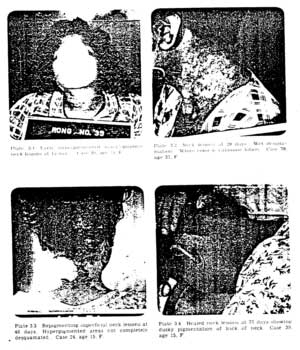
Project 4.1 was the designation for a medical study conducted by the United States of those residents of the Marshall Islands exposed to radioactive fallout from the March 1, 1954 Castle Bravo nuclear test at Bikini Atoll, which had an unexpectedly large yield. For the first decade after the test, the effects were ambiguous and statistically difficult to correlate to radiation exposure: miscarriages and stillbirths among exposed Rongelap women doubled in the first five years after the accident, but then returned to normal; some developmental difficulties and impaired growth appeared in children, but in no clear-cut pattern. In the decades that followed, though, the effects were undeniable. Children began to suffer disproportionately from thyroid cancer (due to exposure to radioiodines), and almost a third of those exposed developed neoplasms by 1974.
As a Department of Energy Committee writing on the human radiation experiments wrote, “It appears to have been almost immediately apparent to the AEC and the Joint Task Force running the Castle series that research on radiation effects could be done in conjunction with the medical treatment of the exposed populations.” The DOE report also concluded that “The dual purpose of what is now a DOE medical program has led to a view by the Marshallese that they were being used as ‘guinea pigs’ in a ‘radiation experiment.’”
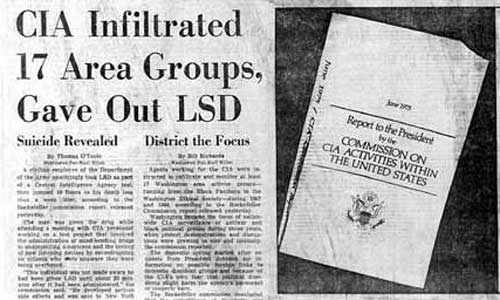
Project MKULTRA, or MK-ULTRA, was the code name for a CIA mind-control research program, run by the Office of Scientific Intelligence, that began in the early 1950s and continued at least through the late 1960s. There is much published evidence that the project involved the surreptitious use of many types of drugs, as well as other methodologies, to manipulate individual mental states and to alter brain function.
Experiments included administering LSD to CIA employees, military personnel, doctors, other government agents, prostitutes, mentally ill patients, and members of the general public in order to study their reactions. LSD and other drugs were usually administered without the subject’s knowledge and informed consent, a violation of the Nuremberg Code that the U.S. agreed to follow after WWII.
Efforts to “recruit” subjects were often illegal, even discounting the fact that drugs were being administered (though actual use of LSD, for example, was legal in the United States until October 6, 1966). In Operation Midnight Climax, the CIA set up several brothels to obtain a selection of men who would be too embarrassed to talk about the events. The men were dosed with LSD, and the brothels were equipped with one-way mirrors and the “sessions” were filmed for later viewing and study.
In 1973, CIA Director Richard Helms ordered all MKULTRA files destroyed. Pursuant to this order, most CIA documents regarding the project were destroyed, making a full investigation of MKULTRA virtually impossible.
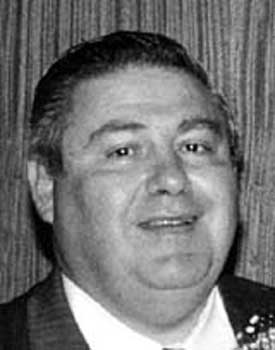
South Africa’s apartheid army forced white lesbian and gay soldiers to undergo ‘sex-change’ operations in the 1970′s and the 1980′s, and submitted many to chemical castration, electric shock, and other unethical medical experiments. Although the exact number is not known, former apartheid army surgeons estimate that as many as 900 forced ‘sexual reassignment’ operations may have been performed between 1971 and 1989 at military hospitals, as part of a top-secret program to root out homosexuality from the service.
Army psychiatrists aided by chaplains aggressively ferreted out suspected homosexuals from the armed forces, sending them discretely to military psychiatric units, chiefly ward 22 of 1 Military Hospital at Voortrekkerhoogte, near Pretoria. Those who could not be ‘cured’ with drugs, aversion shock therapy, hormone treatment, and other radical ‘psychiatric’ means were chemically castrated or given sex-change operations.
Although several cases of lesbian soldiers abused have been documented so far—including one botched sex-change operation—most of the victims appear to have been young, 16 to 24-year-old white males drafted into the apartheid army.
Dr. Aubrey Levin (the head of the study) is now Clinical Professor in the Department of Psychiatry (Forensic Division) at the University of Calgary’s Medical School. He is also in private practice, as a member in good standing of the College of Physicians and Surgeons of Alberta.

There have been many reports of North Korean human experimentation. These reports show human rights abuses similar to those of Nazi and Japanese human experimentation in World War II. These allegations of human rights abuses are denied by the North Korean government, who claim that all prisoners in North Korea are humanely treated.
One former North Korean woman prisoner tells how 50 healthy women prisoners were selected and given poisoned cabbage leaves, which all the women had to eat despite cries of distress from those who had already eaten. All 50 were dead after 20 minutes of vomiting blood and anal bleeding. Refusing to eat would have meant reprisals against them and their families.
Kwon Hyok, a former prison Head of Security at Camp 22, described laboratories equipped respectively for poison gas, suffocation gas and blood experiments, in which 3 or 4 people, normally a family, are the experimental subjects. After undergoing medical checks, the chambers are sealed and poison is injected through a tube, while “scientists” observe from above through glass. Kwon Hyok claims to have watched one family of 2 parents, a son and a daughter die from suffocating gas, with the parents trying to save the children using mouth-to-mouth resuscitation for as long as they had the strength.
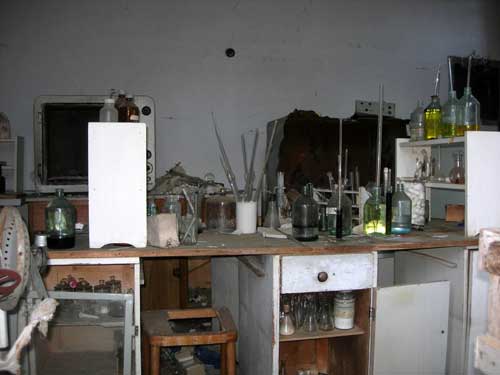
The Poison laboratory of the Soviet secret services, also known as Laboratory 1, Laboratory 12 and “The Chamber”, was a covert poison research and development facility of the Soviet secret police agencies. The Soviets tested a number of deadly poisons on prisoners from the Gulag (“enemies of the people”), including mustard gas, ricin, digitoxin and many others. The goal of the experiments was to find a tasteless, odorless chemical that could not be detected post mortem. Candidate poisons were given to the victims, with a meal or drink, as “medication”.
Finally, a preparation with the desired properties called C-2 was developed. According to witness testimonies, the victim changed physically, became shorter, weakened quickly, became calm and silent and died within fifteen minutes. Mairanovsky brought to the laboratory people of varied physical condition and ages in order to have a more complete picture about the action of each poison.
In addition to human experimentation, Mairanovsky personally executed people with poisons, under the supervision of Pavel Sudoplatov.
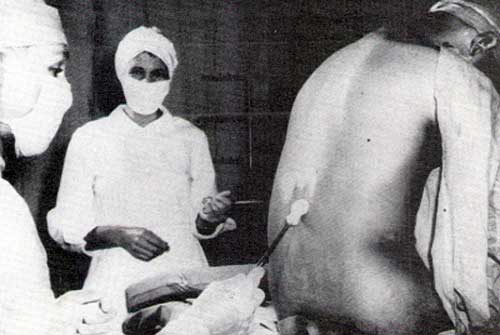
The Tuskegee Study of Untreated Syphilis in the Negro Male was a clinical study, conducted between 1932 and 1972 in Tuskegee, Alabama, in which 399 (plus 201 control group without syphilis) poor — and mostly illiterate — African American sharecroppers were denied treatment for Syphilis.
This study became notorious because it was conducted without due care to its subjects, and led to major changes in how patients are protected in clinical studies. Individuals enrolled in the Tuskegee Syphilis Study did not give informed consent and were not informed of their diagnosis; instead they were told they had “bad blood” and could receive free medical treatment, rides to the clinic, meals and burial insurance in case of death in return for participating. In 1932, when the study started, standard treatments for syphilis were toxic, dangerous, and of questionable effectiveness. Part of the original goal of the study was to determine if patients were better off not being treated with these toxic remedies. For many participants, treatment was intentionally denied. Many patients were lied to and given placebo treatments—in order to observe the fatal progression of the disease.
By the end of the study, only 74 of the test subjects were still alive. Twenty-eight of the men had died directly of syphilis, 100 were dead of related complications, 40 of their wives had been infected, and 19 of their children had been born with congenital syphilis.
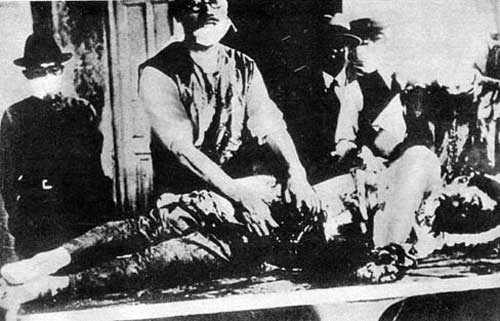
Unit 731 was a covert biological and chemical warfare research and development unit of the Imperial Japanese Army that undertook lethal human experimentation during the Second Sino-Japanese War (1937–1945) and World War II. It was responsible for some of the most notorious war crimes carried out by Japanese personnel.
Some of the numerous atrocities committed by the commander Shiro Ishii and others under his command in Unit 731 include: vivisection of living people (including pregnant women who were impregnated by the doctors), prisoners had limbs amputated and reattached to other parts of their body, some prisoners had parts of their bodies frozen and thawed to study the resulting untreated gangrene. Humans were also used as living test cases for grenades and flame throwers. Prisoners were injected with strains of diseases, disguised as vaccinations, to study their effects. To study the effects of untreated venereal diseases, male and female prisoners were deliberately infected with syphilis and gonorrhea via rape, then studied.
When Ishii wanted a human brain to experiment upon, guards were assigned to acquire the organ. Grabbing a prisoner, the guards held him down, while another cleaved open his skull with an axe. The organ was clumsily removed and rushed to Ishii's laboratory. The remains of the "sacrificed" prisoner were then "disposed" of in the camp crematorium. Other prisoners could look forward to equally horrific experimentation. Live dissection was common-place.
For forty years the grisly activities of Japan's Unit 731 and sister units, remained
the best kept secret of World War two. The victorious Allies were desperate to secretly
acquire the expertise and know how of the Japanese Biological Warfare research. Fulsome
records of the human experimentation undertaken, were especially sought. Hindered at home
by social repulsion to such activities, human experimentation data was viewed as the jewel
in the crown.
Scientists and medical experts from Fort Detrick, Maryland - the American top secret BW facility - raced to interview Japanese technicians. Barely one of them stopped to consider the ethical implications. Having assessed the facts, an intelligence cable coldly informed the War Department, Washington DC, that the "foregoing information warrants conclusion that Japanese BW Group, headed by Ishii did violate rules of land warfare." The message added pragmatically: "this expression of opinion is not a recommendation that group be charged and tried as such." None of those implicated in Japanese BW research were brought to trial by the Allies.
Rivalling in size Germany's notorious Auschwitz-Burkenau death camp, Unit 731's facility was located at, Pingfan, Manchuria. This isolated location was chosen for secrecy and security. Pingfan's compound was 6 square kilometres in size. It housed administrative buildings, laboratories, workers dormitories, barracks, an autopsy-dissecting building and a special prison to house human test subjects. Three giant furnaces handled "disposal" of human carcasses. Subjects chosen for human testing were humorously referred to as "logs" or "lumber." A smaller camp at Mukden, Manchuria, housed American, British, Australian and New Zealand POW's. Here too, hideous experiments were performed in secret.
Ishii Shiro was a brilliant and grandiose Army microbiologist. Possessing a flamboyant
personality, he soon attracted the attention of influential and senior officers, and was
assured rapid promotion. By 1927 he was closely aligned to ultra-nationalists in the War
Ministry and pushing hard for developments in Biological Weapons. Following the Japanese
invasion of Manchuria, Ishii wangled an assignment to the Manchurian colony. He chose
Harbin, capital of the Heilongjiang province, to begin his covert work involving human
experimentation. Even though a junior officer, Major Ishii was given a large, secret
annual budget. His first command was assigned the cover name, the "Togo Unit"
and boasted 300 men. This unit rapidly evolved and grew, undergoing a number of
"cover" identities along the way.
Constructed by forced labour, his first major BW facility was built at Beiyinhe, some 70km outside Harbin. Known locally as the "Zhong Ma Prison Camp," the Chinese labour force were required to wear eye-shields, to prevent them from seeing what they were building. Conditions were harsh. At the centre of the compound a large building known as "Zhong Ma Castle" housed prisoners and a human experiment laboratory. Numbering 500-600, the "logs" were a mixed bunch. Ranging from "bandits," "criminals" through to Orwellian "suspicious persons," their regime was severe. Shackled hand and foot they were, non-the less, fed well and exercised regularly. Healthy specimens were vital for scientific experimentation.
Ishii and other members of the Togo unit would draw 500 cc of blood from selected prisoners every few days. Once they had grown too weak to be of further use, they were "sacrificed" by lethal injection. Prior to disposal in the Zhong Ma crematorium, it was usual for the cadaver to be dissected. Ishii's first crude attempts on biological weapons focused on three contagious diseases: anthrax, glanders and plague. Plague infected fleas lured from mice were used to produce a bacterium that was injected in to prisoners. Within ten to twelve days the infected "logs" were writhing with temperatures of 40 degrees Celsius. One prisoner survived in these conditions for nineteen days. All were eventually dissected while alive.
In another experiment two "bandits" were subjected to Phosgene gas, injected
in to a brick-lined room. Another was injected with 15 mg of Potassium cyanide. Others
burned under 20,000 volts of electricity. Not a fatal dose, they were later disposed of by
poison injections. Still others were slowly roasted to death by lower but continuos
voltages. All experiments were subject to meticulous record keeping.
The Unit was also keenly interested in "frostbite" experimentation. This was a particularly important project. Frostbite degraded military efficiency during the bitter Manchurian winters. By the time Ishii's research facility was relocated to the massive Ping Fan complex in 1939, frostbite tests were routine. Echoing similar work by the notorious Nazi, Dr. Josep Mengele, naked prisoners - males and females - were subjected to sub-freezing temperatures. Later they were "defrosted" by a range of experimental techniques. It was usual for these "logs" to have their limbs beaten with sticks until they resounded with a hard, hollow ring - signifying the freezing process was complete.
Other experiments involved "hanging material" (i.e. humans) upside down to determine how long it took for subjects to choke to death. Another involved injecting air into prisoners to test for the onset of embolisms. Almost indescribable was the practise of injecting horse urine into the kidneys of prisoners. A common practise was feeding "logs" with food and drink heavily laced with cholera, heroin and castor oil seeds and other pathogens. A fulsome and incisive account of the inhumane history of Unit 731, can found in Prof. Sheldon H. Harris' excellent book "Factories of Death" (Routledge, London 1995).
Lacking any degree of guilt, Ishii produced scientific papers giving the results of these hideous experiments. Circulated throughout the Japanese medical and scientific community, the "logs" were referred to as "monkeys." Despite this ploy, it was an open secret that humans were the real test subjects. In all, Ishii personally patented over two hundred discoveries, benefiting handsomely from his research.
By the close of WW11, Ishii - now ranked a Lt. General - bound his subordinates to an
oath of secrecy. Thereafter members of Unit 731 made their way home, after first
destroying the Pingfan facility and other sites, as best they could. Despite claims that
all, or most of the - all important - records were destroyed in the clean-up exercise, it
is thought that many were buried by Ishii, for later retrieval. Despite their precautions,
Allied intelligence had sizeable dossiers on the leading Japanese microbiologists. The
Americans, especially, believed they were way behind the Japanese in the field of
Biological Warfare. US military strategists appreciated the tactical benefits of germ
warfare. Biological agents could be introduced in to a war zone covertly. In fact, Ishii
had done this on a number of occasions in China and elsewhere.
With the "cold war" beginning to hot up, senior US military officers were anxious to block the Soviets acquiring Ishii's expertise and records. A secret deal was discussed at the highest levels. Yet, a major obstacle had to be overcome. It was the darkest "secret of secrets." Returning Allied POW's recounted harrowing tales of biological experimentation ruthlessly conducted upon them. If these stories were reported by the press, the public would bray for blood. Despite this a deal was struck. By 1948, immunity was offered to all members of Ishii's Unit in exchange for data and co-operation. Prosecutors at the Tokyo War Crimes trials were warned off. Allied POW's were sworn to secrecy, and cynically forgotten. The biggest cover-up of the war had commenced.
Forty years later, former servicemen began unburdening themselves of their ordeals. "Damn right I remember," Joseph Gozzo snaps angrily. A former aviation engineer living in San Jose, California, Gozzo had glass rods inserted in his rectum during his internment. Gozzo is understandably resentful. "I can't believe our government let them get away with it." he says. Ex POW, Frank James, shared his memories with a US House of Representatives subcommittee in 1986. "We were just pawns," he later reflected. "We always knew there was a cover-up." Another prisoner, Max McClain, remembers lining up for injections with his bunk-mate, George Hayes. Forty eight hours later, Hayes complained, "Mac, I don't know what those SOBs gave me, but I feel like crap." That evening Hayes was dissected by the "boys at the morgue," McClain remembers bitterly. The House of Representatives hearing lasted just half a day. Only one of 200 US survivors was permitted to testify. Incredibly, the chief archivist for the US Army testified, saying that most of the files and documents provided by Ishii, were returned to Japan in the 1950's. They hadn't bothered to make copies.
The US and Japanese governments routinely denied these events took place, despite an
increasing body of available information. A file from Gen. Douglas MacArthur's
headquarters states that the investigation of Unit 731 was "under direct Joint Chiefs
of Staff order." The document continues, "The utmost secrecy is essential in
order to protect the interests of the United States and to guard against
embarrassment." The secrecy finally wilted in 1993, when US Defense Secretary,
William Perry, under pressure, promised to declassify records of WW11 experiments.
Many of those involved in the Japanese BW experiments, became successful after the war. A number held senior university posts in the field of medicine. Another headed up a leading Japanese pharmaceutical company. Still others gained positions ranging from President of the Japan Medical Association, through to Vice President of the renowned Green Cross Corporation. Unrepentant, Ishii died in 1959.
Before he was through, Shiro Ishii was to have an even more profound effect on the Allies. The taboo on involuntary human experimentation evaporated. US and British citizens once more became guinea pigs - this time at the cynical hands of their own governments, and on home soil. Meanwhile, history sneezed and repeated itself. In March 1992, members of the Aum Shinrikyo sect, including its charismatic guru, Shoko Asahara, flew to Moscow to sign a new Japanese-Soviet pact. At stake was a bounty of high-tech Russian nuclear, chemical and biological weapons.
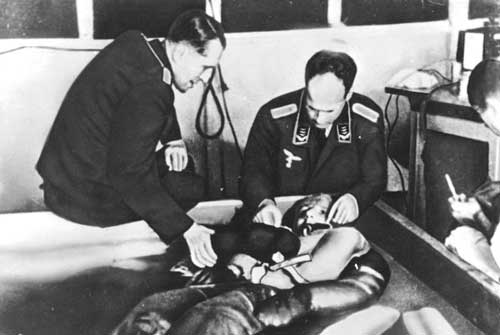
Nazi human experimentation was medical experimentation on large numbers of people by the German Nazi regime in its concentration camps during World War II. At Auschwitz, under the direction of Dr. Eduard Wirths, selected inmates were subjected to various experiments which were supposedly designed to help German military personnel in combat situations, to aid in the recovery of military personnel that had been injured, and to advance the racial ideology backed by the Third Reich.
Experiments on twin children in concentration camps were created to show the similarities and differences in the genetics and eugenics of twins, as well as to see if the human body can be unnaturally manipulated. The central leader of the experiments was Dr. Josef Mengele, who performed experiments on over 1,500 sets of imprisoned twins, of which fewer than 200 individuals survived the studies. Dr. Mengele organized the testing of genetics in twins. The twins were arranged by age and sex and kept in barracks in between the test, which ranged from the injection of different chemicals into the eyes of the twins to see if it would change their colors to literally sewing the twins together in hopes of creating conjoined twins.
In 1942 the Luftwaffe conducted experiments to learn how to treat hypothermia. One study forced subjects to endure a tank of ice water for up to three hours (see image above). Another study placed prisoners naked in the open for several hours with temperatures below freezing. The experimenters assessed different ways of rewarming survivors.
From about July 1942 to about September 1943, experiments to investigate the effectiveness of sulfonamide, a synthetic antimicrobial agent, were conducted at Ravensbrück. Wounds inflicted on the subjects were infected with bacteria such as Streptococcus, gas gangrene, and tetanus. Circulation of blood was interrupted by tying off blood vessels at both ends of the wound to create a condition similar to that of a battlefield wound. Infection was aggravated by forcing wood shavings and ground glass into the wounds. The infection was treated with sulfonamide and other drugs to determine their effectiveness.
10
Stanford Prison Experiment

The Stanford prison experiment was a psychological study of human responses to captivity and its behavioral effects on both authorities and inmates in prison. The experiment was conducted in 1971 by a team of researchers led by psychologist Philip Zimbardo at Stanford University. Undergraduate volunteers played the roles of both guards and prisoners living in a mock prison in the basement of the Stanford psychology building.
Prisoners and guards rapidly adapted to their roles, stepping beyond the boundaries of what had been predicted and leading to dangerous and psychologically damaging situations. One-third of the guards were judged to have exhibited “genuine” sadistic tendencies, while many prisoners were emotionally traumatized and two had to be removed from the experiment early. Finally, Zimbardo, alarmed at the increasingly abusive anti-social behavior from his subjects, terminated the entire experiment early.
9
The Monster Study

The Monster Study was a stuttering experiment on 22 orphan children in Davenport, Iowa, in 1939 conducted by Wendell Johnson at the University of Iowa. Johnson chose one of his graduate students, Mary Tudor, to conduct the experiment and he supervised her research. After placing the children in control and experimental groups, Tudor gave positive speech therapy to half of the children, praising the fluency of their speech, and negative speech therapy to the other half, belittling the children for every speech imperfection and telling them they were stutterers. Many of the normal speaking orphan children who received negative therapy in the experiment suffered negative psychological effects and some retained speech problems during the course of their life. Dubbed “The Monster Study” by some of Johnson’s peers who were horrified that he would experiment on orphan children to prove a theory, the experiment was kept hidden for fear Johnson’s reputation would be tarnished in the wake of human experiments conducted by the Nazis during World War II. The University of Iowa publicly apologized for the Monster Study in 2001.
8
Project 4.1

Project 4.1 was the designation for a medical study conducted by the United States of those residents of the Marshall Islands exposed to radioactive fallout from the March 1, 1954 Castle Bravo nuclear test at Bikini Atoll, which had an unexpectedly large yield. For the first decade after the test, the effects were ambiguous and statistically difficult to correlate to radiation exposure: miscarriages and stillbirths among exposed Rongelap women doubled in the first five years after the accident, but then returned to normal; some developmental difficulties and impaired growth appeared in children, but in no clear-cut pattern. In the decades that followed, though, the effects were undeniable. Children began to suffer disproportionately from thyroid cancer (due to exposure to radioiodines), and almost a third of those exposed developed neoplasms by 1974.
As a Department of Energy Committee writing on the human radiation experiments wrote, “It appears to have been almost immediately apparent to the AEC and the Joint Task Force running the Castle series that research on radiation effects could be done in conjunction with the medical treatment of the exposed populations.” The DOE report also concluded that “The dual purpose of what is now a DOE medical program has led to a view by the Marshallese that they were being used as ‘guinea pigs’ in a ‘radiation experiment.’”
7
Project MKULTRA

Project MKULTRA, or MK-ULTRA, was the code name for a CIA mind-control research program, run by the Office of Scientific Intelligence, that began in the early 1950s and continued at least through the late 1960s. There is much published evidence that the project involved the surreptitious use of many types of drugs, as well as other methodologies, to manipulate individual mental states and to alter brain function.
Experiments included administering LSD to CIA employees, military personnel, doctors, other government agents, prostitutes, mentally ill patients, and members of the general public in order to study their reactions. LSD and other drugs were usually administered without the subject’s knowledge and informed consent, a violation of the Nuremberg Code that the U.S. agreed to follow after WWII.
Efforts to “recruit” subjects were often illegal, even discounting the fact that drugs were being administered (though actual use of LSD, for example, was legal in the United States until October 6, 1966). In Operation Midnight Climax, the CIA set up several brothels to obtain a selection of men who would be too embarrassed to talk about the events. The men were dosed with LSD, and the brothels were equipped with one-way mirrors and the “sessions” were filmed for later viewing and study.
In 1973, CIA Director Richard Helms ordered all MKULTRA files destroyed. Pursuant to this order, most CIA documents regarding the project were destroyed, making a full investigation of MKULTRA virtually impossible.
6
The Aversion Project

South Africa’s apartheid army forced white lesbian and gay soldiers to undergo ‘sex-change’ operations in the 1970′s and the 1980′s, and submitted many to chemical castration, electric shock, and other unethical medical experiments. Although the exact number is not known, former apartheid army surgeons estimate that as many as 900 forced ‘sexual reassignment’ operations may have been performed between 1971 and 1989 at military hospitals, as part of a top-secret program to root out homosexuality from the service.
Army psychiatrists aided by chaplains aggressively ferreted out suspected homosexuals from the armed forces, sending them discretely to military psychiatric units, chiefly ward 22 of 1 Military Hospital at Voortrekkerhoogte, near Pretoria. Those who could not be ‘cured’ with drugs, aversion shock therapy, hormone treatment, and other radical ‘psychiatric’ means were chemically castrated or given sex-change operations.
Although several cases of lesbian soldiers abused have been documented so far—including one botched sex-change operation—most of the victims appear to have been young, 16 to 24-year-old white males drafted into the apartheid army.
Dr. Aubrey Levin (the head of the study) is now Clinical Professor in the Department of Psychiatry (Forensic Division) at the University of Calgary’s Medical School. He is also in private practice, as a member in good standing of the College of Physicians and Surgeons of Alberta.
5
North Korean Experimentation

There have been many reports of North Korean human experimentation. These reports show human rights abuses similar to those of Nazi and Japanese human experimentation in World War II. These allegations of human rights abuses are denied by the North Korean government, who claim that all prisoners in North Korea are humanely treated.
One former North Korean woman prisoner tells how 50 healthy women prisoners were selected and given poisoned cabbage leaves, which all the women had to eat despite cries of distress from those who had already eaten. All 50 were dead after 20 minutes of vomiting blood and anal bleeding. Refusing to eat would have meant reprisals against them and their families.
Kwon Hyok, a former prison Head of Security at Camp 22, described laboratories equipped respectively for poison gas, suffocation gas and blood experiments, in which 3 or 4 people, normally a family, are the experimental subjects. After undergoing medical checks, the chambers are sealed and poison is injected through a tube, while “scientists” observe from above through glass. Kwon Hyok claims to have watched one family of 2 parents, a son and a daughter die from suffocating gas, with the parents trying to save the children using mouth-to-mouth resuscitation for as long as they had the strength.
4
Poison laboratory of the Soviets

The Poison laboratory of the Soviet secret services, also known as Laboratory 1, Laboratory 12 and “The Chamber”, was a covert poison research and development facility of the Soviet secret police agencies. The Soviets tested a number of deadly poisons on prisoners from the Gulag (“enemies of the people”), including mustard gas, ricin, digitoxin and many others. The goal of the experiments was to find a tasteless, odorless chemical that could not be detected post mortem. Candidate poisons were given to the victims, with a meal or drink, as “medication”.
Finally, a preparation with the desired properties called C-2 was developed. According to witness testimonies, the victim changed physically, became shorter, weakened quickly, became calm and silent and died within fifteen minutes. Mairanovsky brought to the laboratory people of varied physical condition and ages in order to have a more complete picture about the action of each poison.
In addition to human experimentation, Mairanovsky personally executed people with poisons, under the supervision of Pavel Sudoplatov.
3
The Tuskegee Syphilis Study

The Tuskegee Study of Untreated Syphilis in the Negro Male was a clinical study, conducted between 1932 and 1972 in Tuskegee, Alabama, in which 399 (plus 201 control group without syphilis) poor — and mostly illiterate — African American sharecroppers were denied treatment for Syphilis.
This study became notorious because it was conducted without due care to its subjects, and led to major changes in how patients are protected in clinical studies. Individuals enrolled in the Tuskegee Syphilis Study did not give informed consent and were not informed of their diagnosis; instead they were told they had “bad blood” and could receive free medical treatment, rides to the clinic, meals and burial insurance in case of death in return for participating. In 1932, when the study started, standard treatments for syphilis were toxic, dangerous, and of questionable effectiveness. Part of the original goal of the study was to determine if patients were better off not being treated with these toxic remedies. For many participants, treatment was intentionally denied. Many patients were lied to and given placebo treatments—in order to observe the fatal progression of the disease.
By the end of the study, only 74 of the test subjects were still alive. Twenty-eight of the men had died directly of syphilis, 100 were dead of related complications, 40 of their wives had been infected, and 19 of their children had been born with congenital syphilis.
2
Unit 731

Unit 731 was a covert biological and chemical warfare research and development unit of the Imperial Japanese Army that undertook lethal human experimentation during the Second Sino-Japanese War (1937–1945) and World War II. It was responsible for some of the most notorious war crimes carried out by Japanese personnel.
Some of the numerous atrocities committed by the commander Shiro Ishii and others under his command in Unit 731 include: vivisection of living people (including pregnant women who were impregnated by the doctors), prisoners had limbs amputated and reattached to other parts of their body, some prisoners had parts of their bodies frozen and thawed to study the resulting untreated gangrene. Humans were also used as living test cases for grenades and flame throwers. Prisoners were injected with strains of diseases, disguised as vaccinations, to study their effects. To study the effects of untreated venereal diseases, male and female prisoners were deliberately infected with syphilis and gonorrhea via rape, then studied.
When Ishii wanted a human brain to experiment upon, guards were assigned to acquire the organ. Grabbing a prisoner, the guards held him down, while another cleaved open his skull with an axe. The organ was clumsily removed and rushed to Ishii's laboratory. The remains of the "sacrificed" prisoner were then "disposed" of in the camp crematorium. Other prisoners could look forward to equally horrific experimentation. Live dissection was common-place.
Shiro Ishii, Father of Biological WarfareShiro Ishii was unlike most young officers destined for high rank. His backers included some of the biggest guns in the Japanese military establishment. He regularly went on night long drinking binges. A prolific womaniser, he was well known in Tokyo's leading geisha houses. His ability to finance his "recreational" activities on junior officer's pay remains mysterious. Later, however, he grew wealthy, insisting on kick-backs from contractors building his various "facilities." Remembered as the "Father of Japan's BW programme," his most notable observation was that BW must be significant otherwise it wouldn't have been "outlawed by the league of Nations." |
Scientists and medical experts from Fort Detrick, Maryland - the American top secret BW facility - raced to interview Japanese technicians. Barely one of them stopped to consider the ethical implications. Having assessed the facts, an intelligence cable coldly informed the War Department, Washington DC, that the "foregoing information warrants conclusion that Japanese BW Group, headed by Ishii did violate rules of land warfare." The message added pragmatically: "this expression of opinion is not a recommendation that group be charged and tried as such." None of those implicated in Japanese BW research were brought to trial by the Allies.
Rivalling in size Germany's notorious Auschwitz-Burkenau death camp, Unit 731's facility was located at, Pingfan, Manchuria. This isolated location was chosen for secrecy and security. Pingfan's compound was 6 square kilometres in size. It housed administrative buildings, laboratories, workers dormitories, barracks, an autopsy-dissecting building and a special prison to house human test subjects. Three giant furnaces handled "disposal" of human carcasses. Subjects chosen for human testing were humorously referred to as "logs" or "lumber." A smaller camp at Mukden, Manchuria, housed American, British, Australian and New Zealand POW's. Here too, hideous experiments were performed in secret.
The Secret Reveals Itself by ChanceKanda district, on the outskirts of Tokyo, is littered with second-hand bookshops, frequented by university students. In 1984, a student browsing through a box of old, discarded papers - belonging to a former military officer - first discovered the terrible secret of Unit 731. The documents revealed detailed medical reports on subjects suffering from tetanus - an agonising and usually fatal disease. Strangely, the reports detailed the inception of the disease, through to its excruciating conclusion. There was only one possible explanation, the student thought: involuntary human experimentation. World War two's most enduring secret finally revealed itself by chance. |
Constructed by forced labour, his first major BW facility was built at Beiyinhe, some 70km outside Harbin. Known locally as the "Zhong Ma Prison Camp," the Chinese labour force were required to wear eye-shields, to prevent them from seeing what they were building. Conditions were harsh. At the centre of the compound a large building known as "Zhong Ma Castle" housed prisoners and a human experiment laboratory. Numbering 500-600, the "logs" were a mixed bunch. Ranging from "bandits," "criminals" through to Orwellian "suspicious persons," their regime was severe. Shackled hand and foot they were, non-the less, fed well and exercised regularly. Healthy specimens were vital for scientific experimentation.
Ishii and other members of the Togo unit would draw 500 cc of blood from selected prisoners every few days. Once they had grown too weak to be of further use, they were "sacrificed" by lethal injection. Prior to disposal in the Zhong Ma crematorium, it was usual for the cadaver to be dissected. Ishii's first crude attempts on biological weapons focused on three contagious diseases: anthrax, glanders and plague. Plague infected fleas lured from mice were used to produce a bacterium that was injected in to prisoners. Within ten to twelve days the infected "logs" were writhing with temperatures of 40 degrees Celsius. One prisoner survived in these conditions for nineteen days. All were eventually dissected while alive.
A Former British POW RemembersRobert Peaty, a former Major in the Royal Army Ordnance Corps, was the Senior British officer at Mukden. Asked what the camp was like, Peaty said, "I was reminded of Dante's Inferno - abandon hope all ye who enter here..." Peaty kept a secret diary, recording the regular injections of infectious diseases - disguised as preventative vaccinations. His entry for 30 January 1943 records "Everyone received a 5 cc Typhoid-paratyphoid A inoculation." On 23 February 1943 entry read "Funeral service for 142 dead. 186 have died in 5 days, all Americans." Further "inoculations" followed. By 6 August 1942 the death toll reached 208. |
The Unit was also keenly interested in "frostbite" experimentation. This was a particularly important project. Frostbite degraded military efficiency during the bitter Manchurian winters. By the time Ishii's research facility was relocated to the massive Ping Fan complex in 1939, frostbite tests were routine. Echoing similar work by the notorious Nazi, Dr. Josep Mengele, naked prisoners - males and females - were subjected to sub-freezing temperatures. Later they were "defrosted" by a range of experimental techniques. It was usual for these "logs" to have their limbs beaten with sticks until they resounded with a hard, hollow ring - signifying the freezing process was complete.
Other experiments involved "hanging material" (i.e. humans) upside down to determine how long it took for subjects to choke to death. Another involved injecting air into prisoners to test for the onset of embolisms. Almost indescribable was the practise of injecting horse urine into the kidneys of prisoners. A common practise was feeding "logs" with food and drink heavily laced with cholera, heroin and castor oil seeds and other pathogens. A fulsome and incisive account of the inhumane history of Unit 731, can found in Prof. Sheldon H. Harris' excellent book "Factories of Death" (Routledge, London 1995).
Lacking any degree of guilt, Ishii produced scientific papers giving the results of these hideous experiments. Circulated throughout the Japanese medical and scientific community, the "logs" were referred to as "monkeys." Despite this ploy, it was an open secret that humans were the real test subjects. In all, Ishii personally patented over two hundred discoveries, benefiting handsomely from his research.
Former Unit 731 Member Speaks OutTsuneji Shimada worked with the "Minato Group" (dysentery research) of Unit 731 from 1939 until the close of the war. Asked about his activities he was defensive "We did not experiment on soldiers, but we carried out dissections. Normally we gave them infected material to drink and carried out autopsies to ascertain the symptoms." We had to observe the progress (of the diseases) and we had to ascertain the potency of the various viruses." Dysentery was, Shimada said, studied "as a weapon." Blood samples were regularly drawn from POW's "for their research" value. |
With the "cold war" beginning to hot up, senior US military officers were anxious to block the Soviets acquiring Ishii's expertise and records. A secret deal was discussed at the highest levels. Yet, a major obstacle had to be overcome. It was the darkest "secret of secrets." Returning Allied POW's recounted harrowing tales of biological experimentation ruthlessly conducted upon them. If these stories were reported by the press, the public would bray for blood. Despite this a deal was struck. By 1948, immunity was offered to all members of Ishii's Unit in exchange for data and co-operation. Prosecutors at the Tokyo War Crimes trials were warned off. Allied POW's were sworn to secrecy, and cynically forgotten. The biggest cover-up of the war had commenced.
Forty years later, former servicemen began unburdening themselves of their ordeals. "Damn right I remember," Joseph Gozzo snaps angrily. A former aviation engineer living in San Jose, California, Gozzo had glass rods inserted in his rectum during his internment. Gozzo is understandably resentful. "I can't believe our government let them get away with it." he says. Ex POW, Frank James, shared his memories with a US House of Representatives subcommittee in 1986. "We were just pawns," he later reflected. "We always knew there was a cover-up." Another prisoner, Max McClain, remembers lining up for injections with his bunk-mate, George Hayes. Forty eight hours later, Hayes complained, "Mac, I don't know what those SOBs gave me, but I feel like crap." That evening Hayes was dissected by the "boys at the morgue," McClain remembers bitterly. The House of Representatives hearing lasted just half a day. Only one of 200 US survivors was permitted to testify. Incredibly, the chief archivist for the US Army testified, saying that most of the files and documents provided by Ishii, were returned to Japan in the 1950's. They hadn't bothered to make copies.
Ministry of Defence Denies the TruthMukden inmate, Arthur Christie, a private in the Loyal's Regiment, has no reason to think successive British governments lived up to his Regiment's proud name. His many letters to the government, were met with an icy response. "Ministry of Defence, Whitehall, December 12, 1986: ... we still have no evidence to support allegations that the Japanese experimented on Allied POW's at Mukden, nor any evidence to support the allegations of a conspiracy to conceal the truth about what took place." A year later a second letter admitted that Unit 731 was engaged in biological warfare at Pingfan, but that "is not proof that the same thing was happening at Mukden." |
Many of those involved in the Japanese BW experiments, became successful after the war. A number held senior university posts in the field of medicine. Another headed up a leading Japanese pharmaceutical company. Still others gained positions ranging from President of the Japan Medical Association, through to Vice President of the renowned Green Cross Corporation. Unrepentant, Ishii died in 1959.
Before he was through, Shiro Ishii was to have an even more profound effect on the Allies. The taboo on involuntary human experimentation evaporated. US and British citizens once more became guinea pigs - this time at the cynical hands of their own governments, and on home soil. Meanwhile, history sneezed and repeated itself. In March 1992, members of the Aum Shinrikyo sect, including its charismatic guru, Shoko Asahara, flew to Moscow to sign a new Japanese-Soviet pact. At stake was a bounty of high-tech Russian nuclear, chemical and biological weapons.
1
Nazi Experiments

Nazi human experimentation was medical experimentation on large numbers of people by the German Nazi regime in its concentration camps during World War II. At Auschwitz, under the direction of Dr. Eduard Wirths, selected inmates were subjected to various experiments which were supposedly designed to help German military personnel in combat situations, to aid in the recovery of military personnel that had been injured, and to advance the racial ideology backed by the Third Reich.
Experiments on twin children in concentration camps were created to show the similarities and differences in the genetics and eugenics of twins, as well as to see if the human body can be unnaturally manipulated. The central leader of the experiments was Dr. Josef Mengele, who performed experiments on over 1,500 sets of imprisoned twins, of which fewer than 200 individuals survived the studies. Dr. Mengele organized the testing of genetics in twins. The twins were arranged by age and sex and kept in barracks in between the test, which ranged from the injection of different chemicals into the eyes of the twins to see if it would change their colors to literally sewing the twins together in hopes of creating conjoined twins.
In 1942 the Luftwaffe conducted experiments to learn how to treat hypothermia. One study forced subjects to endure a tank of ice water for up to three hours (see image above). Another study placed prisoners naked in the open for several hours with temperatures below freezing. The experimenters assessed different ways of rewarming survivors.
From about July 1942 to about September 1943, experiments to investigate the effectiveness of sulfonamide, a synthetic antimicrobial agent, were conducted at Ravensbrück. Wounds inflicted on the subjects were infected with bacteria such as Streptococcus, gas gangrene, and tetanus. Circulation of blood was interrupted by tying off blood vessels at both ends of the wound to create a condition similar to that of a battlefield wound. Infection was aggravated by forcing wood shavings and ground glass into the wounds. The infection was treated with sulfonamide and other drugs to determine their effectiveness.
No comments:
Post a Comment